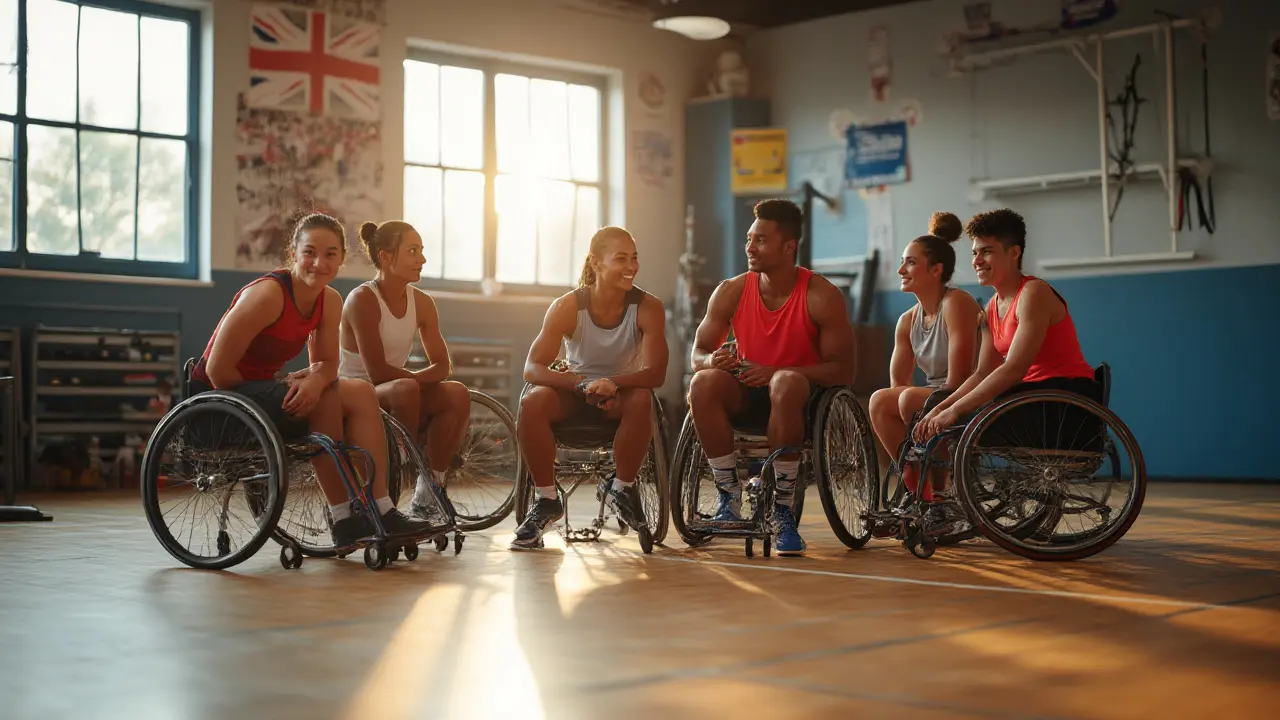You know what never lies? Sore muscles. Whether you’re a weekend cyclist trying to shave seconds off your route or you’re chasing medals on a volleyball court, that stiffness after a tough session is always there to remind you of yesterday’s ambition. Here’s the wild part: some pro athletes actually wish for extra recovery days just to fit in another Thai massage. There’s a good reason for that. This traditional hands-on technique isn’t just about melting stress—it’s got science-backed muscle magic for athletes of all kinds.
How Thai Massage Works: Roots, Rituals, and Proven Perks
Thai massage is sometimes called “lazy yoga” for a reason. Unlike the usual gentle kneading of a Swedish massage, here you’ll find more stretching, more movement, and a dynamic dance between your body and the therapist’s hands, elbows, knees, and feet. The therapist will rhythmically press, pull, twist, and walk on your muscles, following lines called "sen" believed to carry the body’s energy. Don’t worry—it’s less like heavy wrestling and more like being carefully folded and stretched, think yoga with professional assistance.
This isn’t just old-school folklore. Thai massage principles trace back over 2,500 years to Buddhist traditions and traditional medicine in Thailand. Still, modern research is finally catching up with what martial artists, dancers, and footballers in Southeast Asia have sworn by for generations. Here’s what sets Thai massage apart for athletes:
- Deep Stretching: The therapist gently guides you into stretches that target big muscle groups—think hips, hamstrings, glutes, and shoulders—areas that often take a beating in training.
- Compression and Pressure: By rhythmically pressing along the muscle lines, Thai massage helps flush lymphatic fluid and moves circulation into high-traffic areas that tend to get tight after workouts.
- Mobility Boost: The passive stretches are like a secret weapon. Your range of motion increases without you straining or overdoing it, meaning you’re less likely to tweak something next time you sprint or squat.
- Endorphin Release: It’s not just about loosening up muscles. Thai massage has been shown to trigger mood-lifting endorphins, which helps with both pain relief and motivation when you get back into training mode.
One small 2022 study with collegiate track athletes in Bangkok found an average 20% increase in hamstring flexibility right after a 45-minute Thai massage session. More impressively, even after three days, the flexibility boost stuck around for most of the group. That means you could see real benefits in both pre- and post-event routines.
| Session Duration | Flexibility Improvement (%) | DOMS Reduction (%) |
|---|---|---|
| 30 minutes | 12% | 16% |
| 45 minutes | 20% | 27% |
| 60 minutes | 24% | 34% |
That’s not just a placebo effect. The numbers show actual, measurable changes that translate into better on-field results and less post-training agony.

Why Athletes Love Thai Massage: Recovery, Injury Prevention & Performance Gains
If you ask any serious athlete about recovery tools, you’ll probably hear about ice baths, foam rollers, endlessly awkward stretching routines, and maybe even sleeping in compression pants—yes, those exist. But Thai massage has worked its way into the mix for good reason. It’s like a combo pack for muscle repair, joint health, and mental reset.
Let’s break down why this ancient practice works especially well for bodies under heavy athletic stress:
- Reduces Delayed Onset Muscle Soreness (DOMS): That familiar ache peaking 24-48 hours after hard training? Research out of Chiang Mai University found Thai massage cuts the intensity and duration of DOMS, meaning you’ll be ready to go again sooner, instead of wincing every time you stand up.
- Speeds Up Waste Removal: All that repeated compression and release helps your lymphatic system clear out lactic acid and metabolic waste—so your legs don’t feel like cement by the end of the week.
- Improves Sleep Quality: Better sleep equals better recovery. That same endorphin rush you get from Thai massage can help calm the nervous system. Some athletes report noticeably deeper and longer sleep after a session, and sleep trackers often back this up.
- Boosts Mental Focus: Those mindful minutes on the mat can rewire your stress response and help quiet pre-game jitters. It’s not just the muscles that benefit from treatment—it’s your brain, too.
- Prevents Overuse Injuries: By mobilizing joints and stretching tight fascia, Thai massage helps even out muscle imbalances before they turn into nagging injuries that bench you.
There are even life hacks for squeezing in Thai massage benefits without always booking a full session. Some trainers use Thai massage-inspired stretches as part of warmups or cooldowns. You don’t need to be bendy like Luna (my evil genius cat)—just try simple moves that mimic what pros do: lying on your back and gently pulling your knee across your body, or opening up tight hip flexors with a supported lunge. It’s about working smarter, not harder.
Of course, nothing beats the hands-on magic of a trained therapist. Professional footballers in England and basketball players in Australia have started flying Thai massage experts in for training camps. Not a bad perk if you think about it.
| Benefit | Real-World Example |
|---|---|
| DOMS Reduction | Sprinters in a Thai study sprinted at max speed two days earlier than controls after massage |
| Mobility | Volleyball players reported increased jump height after three weeks of regular Thai massage |
| Sleep | Runners using wearable sleep trackers showed on average 42 minutes extra deep sleep after a 60-minute Thai session |
Bottom line? If you’re chasing gains, Thai massage gives you an edge for quicker bounce-back and a longer run at peak performance. And it’s honestly hard to put a price on being able to move your neck again after a brutal set of deadlifts.

Making Thai Massage Work for You: Practical Tips, Session Advice, and Do’s & Don’ts
Not all massages are created equal. Just because your cousin’s friend offers “double-deep tissue” for cheap doesn’t mean your training will benefit. Here’s what you need to know about getting real results from Thai massage, especially if you’re using it as your secret weapon in athletic training.
- Start Slow: If you’ve never tried Thai massage, book a shorter session at first—30 or 45 minutes is enough. Your body will communicate what it’s ready for, and the last thing you want is to limp around from over-enthusiasm (happened to me… not fun).
- Find a Qualified Therapist: Look for certified Thai massage therapists. In the US and UK, national associations often list trained practitioners. A skilled therapist knows how to adjust pressure and stretches for your level and sport.
- Know Your Body’s Limits: Speak up during a session if a stretch feels “too much.” A good therapist listens and will modify, especially for athletes with active injuries or hypermobility issues.
- Add Thai Massage to Your Regular Routine: The sweet spot for most athletes is once a week during peak training, or every other week for maintenance. Pre-event, some prefer a gentle session 24-36 hours beforehand. For deep recovery after competitions, book a longer session (up to 90 minutes) within 48 hours.
- Stay Hydrated: Like any deep tissue work, Thai massage moves a lot of fluid and can flush toxins from tissues. Drink plenty of water before and after your session to help recovery.
- Pair With Active Rest: Use the day after your massage for gentle activity—like walking, yoga, or swimming. It helps your body adapt to the new range of motion and keeps things loose.
- Don’t Skip Warm-Ups: Even if you’re feeling loose from a massage, never skip your usual warm-up before training or competition. The extra mobility can trick your brain into pushing harder than usual.
Athletes swear by Thai massage for a reason, and when you really focus on Thai massage as part of your training, you’ll notice everything from smoother movements to faster bounce-back after tough sessions. Nothing replaces a pro’s hands-on adjustments, but practicing self-stretching inspired by Thai moves in your daily routine can carry over those benefits to the days you can’t get to a studio. Keep an eye out for signs you need a tune-up: joints that crackle, stubborn aches that linger, or sudden performance dips. Sometimes your body’s just craving some good old Thai muscle magic. And if Luna approves, I know I’m onto something good.

